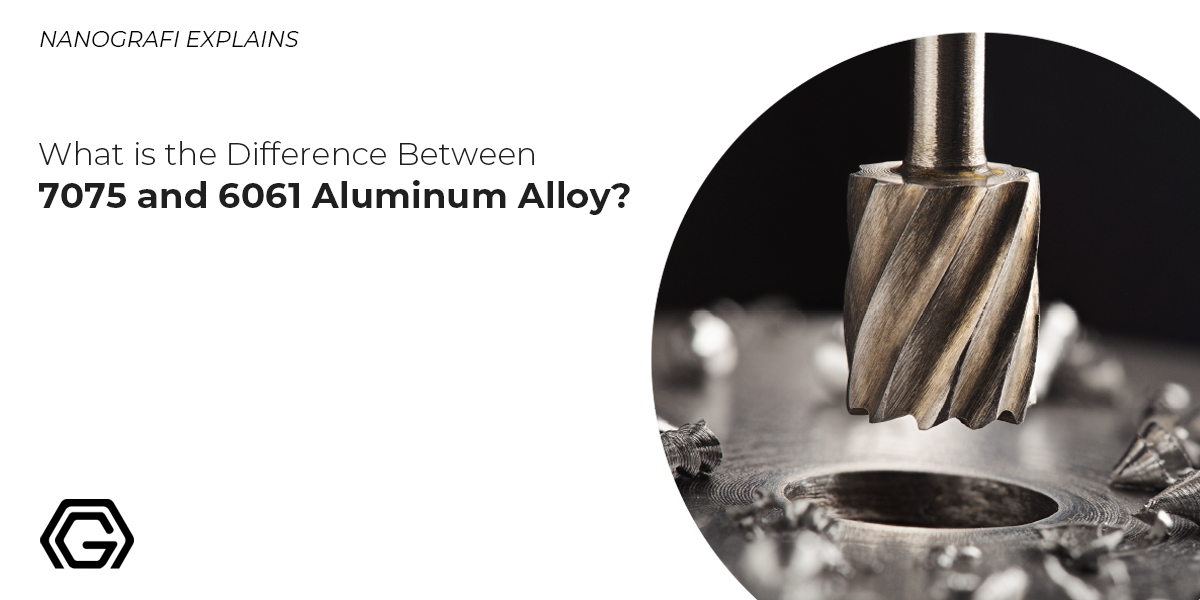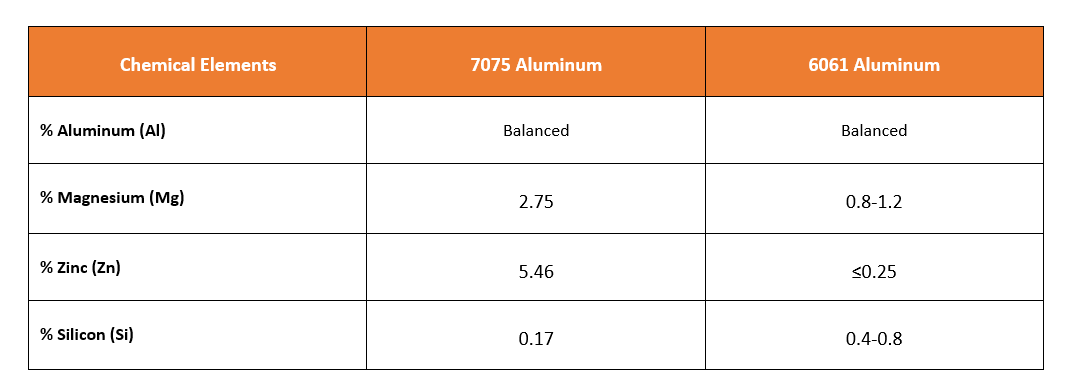What is the Difference Between 7075 and 6061 Aluminum Alloy?
When comparing 7075 aluminum alloy to 6061 aluminum alloy, it's essential to understand their distinct properties and applications. 7075 is renowned for its superior strength, making it ideal for highly stressed parts and applications requiring high strength-to-weight ratios. Conversely, 6061 is appreciated for its versatility, excellent corrosion resistance, and ability to be welded, making it suitable for structural applications where toughness is a priority.
Both alloys play critical roles in industries ranging from aerospace to construction, but their specific characteristics dictate their suitability for different tasks. Nanografi offers high-quality 7075 and 6061 aluminum alloy powders, enabling innovators and manufacturers to leverage the unique properties of these materials for cutting-edge applications.
Introduction
Aluminum alloys are cornerstone materials in many industrial applications, offering a blend of lightweight properties, strength, and corrosion resistance. Among these, 7075 and 6061 aluminum alloys are particularly notable for their distinct characteristics and uses. This post delves into the properties, applications, and differences between these two alloys, providing insights into how to choose the appropriate material for specific engineering needs.
What is 7075 Aluminum Alloy?
7075 aluminum alloy is a high-strength material, initially developed for the aerospace industry due to its high strength-to-weight ratio. This alloy is composed primarily of aluminum, zinc, magnesium, and copper. It is one of the strongest aluminum alloys available, with strength comparable to many steels. 7075 is known for its excellent mechanical properties and is widely used in applications where its high strength and durability are crucial.
Composition and Properties
The primary alloying element of 7075 aluminum is zinc, which contributes significantly to its strength. The addition of magnesium to the alloy increases its corrosion resistance and the ability to withstand high stress without cracking. Copper is added to enhance the alloy's strength and thermal properties. Together, these elements make 7075 aluminum an ideal choice for high-performance applications.
High Strength: Among the highest strengths of all aluminum alloys.
Good Fatigue Strength: Suitable for parts subjected to high-stress fatigue.
Lower Corrosion Resistance: Due to its high strength and composition, it is less corrosion-resistant than some other aluminum alloys and may require protective coatings for certain applications.
Limited Weldability: The welding of 7075 is generally not recommended due to its susceptibility to weakening in the welded regions.
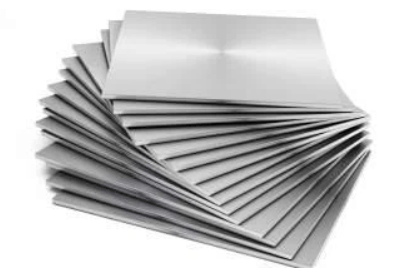
Figure 1. Alloy 7075 bar sheet sample.
Applications of 7075 Aluminum Alloy
Due to its high strength, 7075 aluminum alloy finds its application in many critical areas:
Aerospace and Aviation: Used in the manufacturing of aircraft and aerospace components, including gears and shafts, fuse parts, meter shafts and gears, missile parts, regulating valve parts, and worm gears.
Sporting Goods: Applied in making bicycle components, rock climbing equipment, and professional-grade baseball bats, where high strength and light weight are beneficial.
How nanomaterials are used in sports equipment? Learn now.
Automotive: Utilized in automotive parts that require high strength, such as frames and suspension components.
Machining and Anodization Feature
Machining is a manufacturing process that involves removing material from a workpiece to create a desired shape, size, or finish. It's a broad term that encompasses a variety of processes, including cutting, milling, drilling, turning, and grinding, among others.
7075 aluminum alloy's high strength and hardness pose unique challenges in machining. The alloy's high zinc content, which contributes significantly to its strength, also makes it more susceptible to cracking during machining. Thus, manufacturers often require specialized cutting tools and machining techniques. For instance, carbide or diamond-tipped tools are commonly used to machine 7075 to manage its hardness and minimize tool wear.
Moreover, appropriate coolants and lubricants are essential to reduce the risk of overheating and to ensure a smooth cutting process, which can otherwise lead to material wastage and decreased tool life. When it comes to anodization, 7075 aluminum alloy can also present some challenges. While it can be anodized to increase its surface protection and corrosion resistance, the high zinc content can affect the uniformity and aesthetics of the anodization layer. This can result in a less visually appealing finish compared to other aluminum alloys. However, with careful surface preparation and control of the anodizing process, it's still possible to achieve a protective and durable finish.
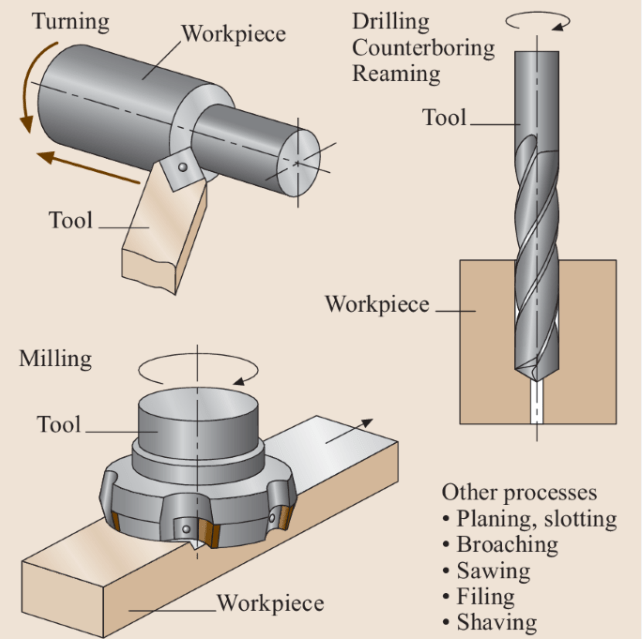
Figure 2. Machining processes.
What is 6061 Aluminum Alloy?
6061 aluminum alloy is another versatile material widely recognized for its excellent combination of strength, weldability, and corrosion resistance. This alloy contains magnesium and silicon as its primary alloying elements, making it suitable for a wide range of applications. It is one of the most commonly used aluminum alloys in the world, appreciated for its balance of workability, mechanical properties, and ability to be anodized.
Composition and Properties
Versatile Applications: 6061 is used in applications ranging from structural components to electronic hardware due to its excellent formability and high resistance to corrosion.
Weldability and Formability: It has excellent weldability and formability, making it ideal for complex shapes and structures.
Good Corrosion Resistance: Offers good resistance to corrosion in both marine and industrial environments.
Moderate Strength: While not as strong as 7075, 6061 aluminum alloy provides sufficient strength for many applications, along with better corrosion resistance and workability.
Applications of 6061 Aluminum Alloy
6061 aluminum's versatility makes it suitable for a wide variety of applications:
Construction: Widely used in construction for structural components such as beams and frames due to its strength and resistance to corrosion.
Automotive: Components such as automotive frames and parts that require good strength, weldability, and corrosion resistance.a
Marine: For marine fittings and structures due to its good resistance to corrosion in saltwater environments.
Consumer Electronics: In the manufacture of electronic gadgets and enclosures, where its anodizing capability is particularly valued.
Machining and Anodization Feature
6061 aluminum, is known for its excellent machinability and weldability. Its balanced composition of magnesium and silicon not only contributes to its good mechanical properties but also makes it easier to cut and shape, even with standard machining tools. This reduces the cost and complexity of manufacturing processes involving 6061.
Furthermore, the alloy's good workability allows it to be easily formed into a variety of shapes, making it suitable for a wide range of applications. Anodization is particularly effective with 6061 aluminum alloy. The process enhances the natural oxide layer, providing additional protection against corrosion and wear while allowing for a variety of color finishes. The silicon content in 6061 facilitates a uniform and aesthetically pleasing anodized layer, which is why 6061 is often chosen for architectural and consumer goods where appearance is important. The ability to anodize 6061 aluminum alloy adds to its versatility, making it a popular choice for many projects that require both functionality and visual appeal.
Figure 3. Example of the approximate chemical components ratio of
Nanografi’s 7075 and 6061 Aluminium Powder Products.
7075 Aluminium Alloy vs. 6061 Aluminium Alloy
If the detailed information mentioned above will be summarised;
The primary distinctions between 7075 and 6061 aluminum alloys lie in their composition, mechanical properties, and ideal applications. 7075 is renowned for its superior strength and is predominantly utilized in applications where high stress-resistance is critical, such as in aerospace and competitive sports equipment. This alloy's composition, enriched with zinc, magnesium, and copper, endows it with strength that competes with steel, albeit with a lesser emphasis on weldability and corrosion resistance.
On the other hand, 6061 is celebrated for its versatility, balancing strength with superior weldability and corrosion resistance, thanks to its magnesium and silicon content. It's the go-to material for structural applications that demand good mechanical properties combined with excellent corrosion resistance, such as in construction and automotive industries. While 7075 is sought after for its performance in high-stress environments, 6061 is preferred for its versatility and ease of use across a broader range of applications, making them both indispensable but for different reasons.
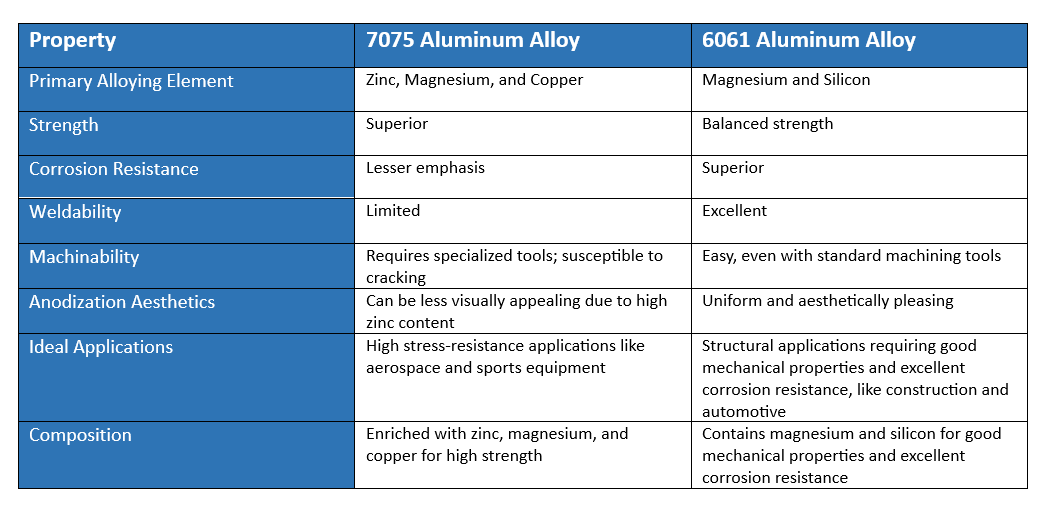
Figure 4. Table representation of the differences between Al 7075 & Al 6061.
Conclusion
Understanding the differences between 7075 and 6061 aluminum alloys is essential for selecting the right material for your project. Each alloy offers unique advantages, from the superior strength of 7075 to the versatile properties of 6061. By considering the specific needs of your application, you can leverage the benefits of these alloys to achieve optimal performance and durability.
To follow the latest developments and innovations related to nanotechnology, visit Blografi.
References
6061 vs. 7075 Aluminum: Which One To Choose for Your Projects? (n.d.). Retrieved April 1, 2024, from https://www.rapiddirect.com/blog/6061-vs-7075-aluminum/
Aluminium 6061 vs. 7075: A Comprehensive Comparison | Kormax. (n.d.). Retrieved April 1, 2024, from https://www.kormax.com/aluminium-6061-vs-7075-a-comprehensive-comparison/
China Aluminum Alloy 7075 bar,sheet Manufacturers, Suppliers - Linkun. (n.d.). Retrieved April 1, 2024, from https://www.lksteelpipe.com/aluminum-alloy-7075
Karpuschewski, B., Byrne, G., Denkena, B., Oliveira, J., & Vereschaka, A. (2021). Machining Processes. Springer Handbooks, 409–460. https://doi.org/10.1007/978-3-030-47035-7_12/COVER
Use of Nanomaterials in Sports Equipment - Nanografi Nano Technology. (n.d.). Retrieved April 1, 2024, from https://nanografi.com/blog/use-of-nanomaterials-in-sports-equipment/
Recent Posts
-
Advanced Materials for Unmanned Aerial Vehicle (UAV) Protection Against Laser
Consider a UAV on a critical mission, rendered inoperative by a sudden laser attack. With the increa …26th Jul 2024 -
Simulation and Modeling of Material Properties
Our world is composed of a dazzling array of materials, each with its own unique properties that dic …19th Jul 2024 -
Advanced Coatings for Superior Corrosion and Wear Resistance
Corrosion and wear pose significant challenges across various industries, leading to substantial eco …12th Jul 2024

